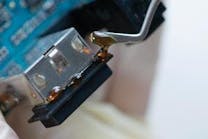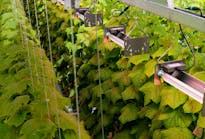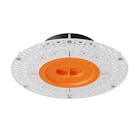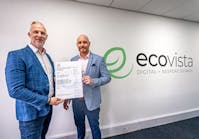The American team Koala has been declared winner of the third edition of the Autonomous Greenhouse Challenge at Wageningen University & Research (WUR) in Bleiswijk The team consists of the start-up company Koidra and researchers from Cornell University. Team captain Kenneth Tran was also leading the winning team of the first edition. This was announced today during a public live event at WUR Bleiswijk. The stream of the event can be viewed via the YouTube-channel of the business unit Horticulture and Flower Bulbs.
Connection between AI and food production
Due to the ever-growing world population, the demand for fresh and healthy vegetables is increasing. Autonomous greenhouses can ensure that more people are fed with vitamin- and mineral-rich products. In addition, these techniques contribute to increasing food safety and a higher production volume of healthy vegetables, using fewer resources such as energy. Its potential has been successfully demonstrated in previous editions of the Autonomous Greenhouse Challenge.
Growing autonomously
In this third edition of the competition, five international teams from around the world have produced a lettuce crop using a fully autonomous algorithm. With the lowest feasible input of resources such as energy and CO2 and the production of a maximum of good quality heads of lettuce, they have optimized the net profit.
Each team had a high-tech greenhouse compartment of Wageningen University & Research in Bleiswijk at its disposal to grow lettuce. The teams have created their own AI algorithms. These algorithms have fully autonomously determined the set points for temperature, amount of daylight and artificial light, heating, CO2 concentration and cultivation-related parameters such as crop density, spacing moments and day of harvest. Next to standard greenhouse sensors, the teams had access to images from a Realsense 3D camera and specific sensors provided by the sponsors Sigrow and Ridder. Some teams added own sensors to deliver input for their algorithm.
Lettuce cv. ‘Lugano’ (RijkZwaan) was planted on 2 May. Teams had to grow lettuce with a target plant weight of 250 g. Also, the quality was judged. If plants were too small, had leaf tip burn or other deformations, they were classified as class B with a lower price or even unsellable class C. If plants were too large, teams wasted resources. The last team finished their crop on 17 June. The resource use (e.g. heating energy, electricity, CO2) was measured during the growing period and operational costs were calculated. Fixed costs depended on occupation of the greenhouse space and use of different installations (e.g. artificial light capacities). From these figures net profit was determined. The team with the highest net profit won the competition.
The teams’ AI algorithms were mounted on a virtual machine on a protected WUR server. Within this protected environment, the algorithms acquired data via a digital interface from LetsGrow and Azure Cloud. At the same time, the algorithms autonomously returned setpoints to the process computer (again through LetsGrow), which ultimately took the action on climate control in the experimental greenhouse. In a first cultivation cycle during February/March this year each team could test their algorithm and procedure. The real challenge involved a second crop cycle during May/June. Teams could not access their algorithm any longer after start of the experiment but had to ask for permission in case they had to make urgent changes (bug fixes) in their algorithms. Access was charged, and costs were subtracted from the net profit. The winning team only accessed the virtual machine once to fix a little mistake.
The result
Team Koala won the competition. Team captain Kenneth Tran also was leader of the winning team Sonoma in the first challenge with a net profit of €5.93 per m2 per crop cycle. The team consisted of the start-up company Koidra, which was founded after the first challenge and researchers from Cornell University. Koala was also ranked first during the online challenge last summer and therefore got a wild card for the competition. It is now clear that the team could meet the high expectations. Team Koala's ambition is to advance greenhouse growing with an intelligent automation technology that is scalable across farms, crops, and even more broadly across process-based manufacturing industries.
Summary of results
A summary of results is given hereunder. Like in the earlier editions all collected data (not the algorithms) will be made publicly available later this year.
YouTube channel: https://www.youtube.com/channel/UCXvW_h6puqtwIXqV0_N40Jg
Focusing on the mission ‘To explore the potential of nature to improve the quality of life’, Wageningen University & Research (WUR) combines fundamental and applied knowledge in order to contribute to resolving important questions in the domain of healthy food and living environment. Over 6,500 employees (over 5,500 fte) and more than 12,000 students are inspired by nature, society, and technology and tackle the issues with an open and curious perspective. This inspiration has enabled WUR to be amazed, develop knowledge, and apply this knowledge internationally for over a century. We collaborate with governments, companies, non-governmental organisations and other research institutes.
Contact:
Silke Hemming - Head, Scientific Research Team
Greenhouse Technology
WUR





